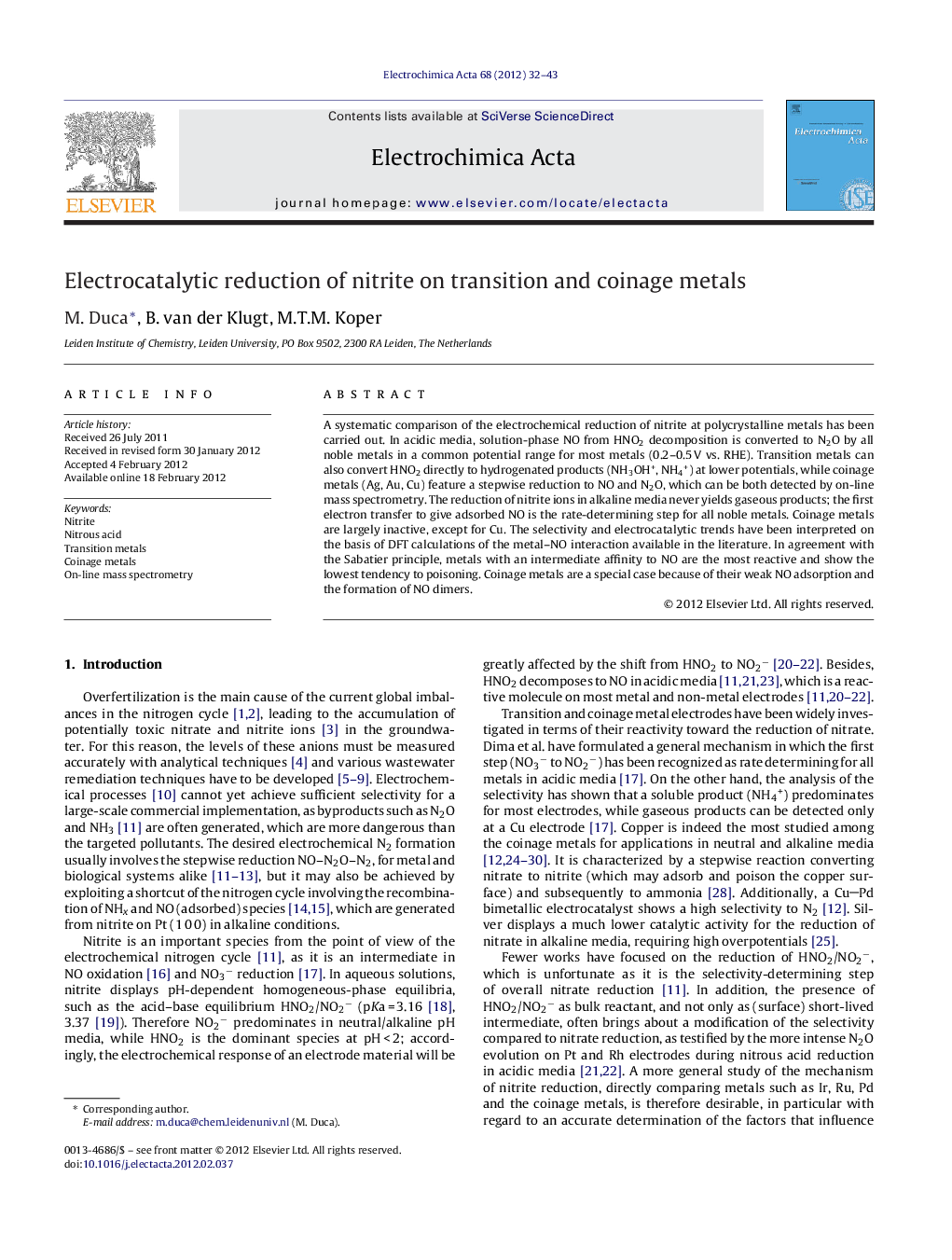| Article ID | Journal | Published Year | Pages | File Type |
|---|---|---|---|---|
| 188680 | Electrochimica Acta | 2012 | 12 Pages |
A systematic comparison of the electrochemical reduction of nitrite at polycrystalline metals has been carried out. In acidic media, solution-phase NO from HNO2 decomposition is converted to N2O by all noble metals in a common potential range for most metals (0.2–0.5 V vs. RHE). Transition metals can also convert HNO2 directly to hydrogenated products (NH3OH+, NH4+) at lower potentials, while coinage metals (Ag, Au, Cu) feature a stepwise reduction to NO and N2O, which can be both detected by on-line mass spectrometry. The reduction of nitrite ions in alkaline media never yields gaseous products; the first electron transfer to give adsorbed NO is the rate-determining step for all noble metals. Coinage metals are largely inactive, except for Cu. The selectivity and electrocatalytic trends have been interpreted on the basis of DFT calculations of the metal–NO interaction available in the literature. In agreement with the Sabatier principle, metals with an intermediate affinity to NO are the most reactive and show the lowest tendency to poisoning. Coinage metals are a special case because of their weak NO adsorption and the formation of NO dimers.
